 Our annual return-to-school professional development this year was a lovely buffet of technology-themed mini-workshops to help us navigate the ever-expanding realm of ed tech. The PD was well received, and it also got me thinking.
Our annual return-to-school professional development this year was a lovely buffet of technology-themed mini-workshops to help us navigate the ever-expanding realm of ed tech. The PD was well received, and it also got me thinking.
I’ve never been a technology skeptic, nor does technology make me uneasy. That being said, I’ve also rarely been the type to let any particular app or site or device really transform my classroom in any particular way. I adore Google Classroom and the entire suite of Google work tools (Docs, Slides, etc.), but I still think of them as supplements to my normal curriculum and pedagogy, as opposed to transformative additions (though Google Docs comes close with regard to writers workshops).
A Nanobot of Sugar
Lately, though, I’ve started to realize that tiny doses of technology here and there have a pretty transformative impact on how we help our kids. I’m not offering this up as a revelation, but it’s worth thinking about what kids need in an English class and how we deliver it to them. Virtual and augmented reality are knocking at the door–Pokemon and PlayStation have already invited them in!–so we’d do well to think about what roles technology has performed well in inside our classrooms.
I’d encourage you to slow down your busy lesson planning routine to take similar stock of how and where you’re implementing technology.
To Infinity and Beyond: Traditional Assessments
Here are a few tech forays I’ve made into advanced approaches to very traditional English stuff.
Reading comprehension. My old failing in this arena was my continual insistence that students demonstrate their comprehension in written form. As I began to trust graded discussions more, I discovered how many students actually had a rather robust knowledge of the texts we were reading. These students, though, lacked the writing sophistication to express that knowledge in the only way I had been allowing them to.
Oh, the irony, technology, you sly dog! It turns out, given a “safe space” where kids are typing (also known as “writing”) to each other–instead of to me–they suddenly reveal that very sophistication in their writing that I had found lacking.
Technology is the key. In class I’m really fond of GoSoapBox, which allows for things like instant polling in addition to longer responses. It will also provide a printable transcript of any conversation the class produces. Google Classroom has similar features, but apps with a polling feature allow for some very interesting on-the-spot data: turns out kids get pretty honest when they’re provided a formative (absolutely key) and anonymous virtual space to share their thoughts.
Writing Feedback
I’ve written at length about the joys of audio feedback, which I began exploring last year using turnitin.com. This year I may explore other apps that provide kids a verbal walkthrough of their writing. My frustration has been that technology in this case was only addressing one side of the process–it’s great that I can talk to kids about their final product, but it seems almost MORE important for them to talk to ME.
 Enter “Flipgrid,” a new app I discovered at a conference recently (thanks, AssisTechKnow!) that allows students to respond to a prompt with 90 seconds of video. If I can give them three minutes of summary about what I thought of their writing, it seems reasonable that they could give me half that amount in reflection on some area of the rubric I ask them to consider more closely. We’ll see how this turns out, but I’m surmising that speaking into a camera lens might have a sobering effect that traditional forms of reflection (“Fill out this self-reflection sheet–and be honest!”) simply do not.
Enter “Flipgrid,” a new app I discovered at a conference recently (thanks, AssisTechKnow!) that allows students to respond to a prompt with 90 seconds of video. If I can give them three minutes of summary about what I thought of their writing, it seems reasonable that they could give me half that amount in reflection on some area of the rubric I ask them to consider more closely. We’ll see how this turns out, but I’m surmising that speaking into a camera lens might have a sobering effect that traditional forms of reflection (“Fill out this self-reflection sheet–and be honest!”) simply do not.
Exit Slips
Exit slips involve a bit more application of the same technology I’ve mentioned above, at least for now. I think Join.Me will play a role here too, eventually, allowing my students to share to the classroom’s center screen right from their seats. For now, though, I’m looking at smaller ways to gather fast, impactful formative data from my kids.
Right now it’s mostly online discussion or polling spaces, but there are apps out there that will allow kids to, say, take a photo of a page in their book and then annotate it with a drawing tool before submitting it to me on their way out the door. Imagine the usefulness of snippets of focused annotation from a struggling reader in response to a question–without having to photocopy a thing!
Like I said–nothing groundbreaking. Worth thinking about though: Are you using technology to fill gaps or to rethink failures…or are you just using it because it’s all the rage? I, for one, welcome our robot overlords…but that’s because I feel pretty good about all the toys they’ve brought.

Michael Ziegler (@ZigThinks) is a Content Area Leader and teacher at Novi High School. This is his 15th year in the classroom. He teaches 11th Grade English and IB Theory of Knowledge. He also coaches JV Girls Soccer and has spent time as a Creative Writing Club sponsor, Poetry Slam team coach, AdvancEd Chair, and Boys JV Soccer Coach. He did his undergraduate work at the University of Michigan, majoring in English, and earned his Masters in Administration from Michigan State University.

 Our department read the wonderful
Our department read the wonderful  On a road trip this summer, an old favorite track, Ice Cube’s “My Summer Vacation,” popped up on my shuffle. I immediately started ruminating about its amazing, subversive cultural commentary. The entire track plays out as a straightforward story of drug dealing and violence, until the final verse ends with the sudden revelation, “No parole or probation / Now this is a young man’s summer vacation / No chance for rehabilitation.” Every time I hear this final verse I react to it–I draw connections to research I’ve read, and I think of statistics about America’s youth. But mostly I react emotionally in exactly the way the song cleverly wants me to.
On a road trip this summer, an old favorite track, Ice Cube’s “My Summer Vacation,” popped up on my shuffle. I immediately started ruminating about its amazing, subversive cultural commentary. The entire track plays out as a straightforward story of drug dealing and violence, until the final verse ends with the sudden revelation, “No parole or probation / Now this is a young man’s summer vacation / No chance for rehabilitation.” Every time I hear this final verse I react to it–I draw connections to research I’ve read, and I think of statistics about America’s youth. But mostly I react emotionally in exactly the way the song cleverly wants me to. I’m prepared to be proven wrong. But I think shifting the focus of their low-stakes writing might result in much higher-quality results. A student who felt lost the whole time you read A Doll’s House, for instance, might bring the noise if you ask her to assess the gender stereotyping of The Bachelor or The Bachelorette.
I’m prepared to be proven wrong. But I think shifting the focus of their low-stakes writing might result in much higher-quality results. A student who felt lost the whole time you read A Doll’s House, for instance, might bring the noise if you ask her to assess the gender stereotyping of The Bachelor or The Bachelorette. This summer, my Theory of Knowledge students will read two independent books in preparation for the second semester of the course. Down the hall, my colleague Hattie (you know her from her
This summer, my Theory of Knowledge students will read two independent books in preparation for the second semester of the course. Down the hall, my colleague Hattie (you know her from her 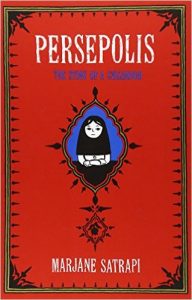 The Comic Book Flood
The Comic Book Flood A funny thing happened as my students were wrapping up their narrative journalism papers a couple weeks ago on the shiny new Chromebooks I’d reserved for the assignment. As I was reviewing a few formatting details with them, it suddenly dawned on me that my deadline for a hard copy of the paper–the end of the hour–was physically impossible. There is no printer attached to our Chromebook carts.
A funny thing happened as my students were wrapping up their narrative journalism papers a couple weeks ago on the shiny new Chromebooks I’d reserved for the assignment. As I was reviewing a few formatting details with them, it suddenly dawned on me that my deadline for a hard copy of the paper–the end of the hour–was physically impossible. There is no printer attached to our Chromebook carts. Let’s consider briefly what written feedback tends to look like when you have 100 essays to grade.
Let’s consider briefly what written feedback tends to look like when you have 100 essays to grade. Back in
Back in 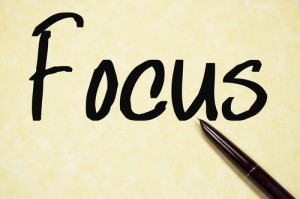 When we conflate the two and give them a ½ on the question, we have provided ourselves a sloppy data point. And by the time we’ve graded a set of 120 of that assessment, we might come to a wrong-minded, broad conclusion that sets the class back needlessly. Do they
When we conflate the two and give them a ½ on the question, we have provided ourselves a sloppy data point. And by the time we’ve graded a set of 120 of that assessment, we might come to a wrong-minded, broad conclusion that sets the class back needlessly. Do they I think it’s safe to say that there’s a bit more mathematical calculation in your normal English classroom pedagogy than there was, say, five years ago.
I think it’s safe to say that there’s a bit more mathematical calculation in your normal English classroom pedagogy than there was, say, five years ago. 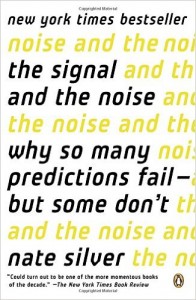 The funny thing about data, though, is that numbers aren’t as clear and objective as all those charts and bar graphs would have us believe. If you don’t want to take an English teacher’s word for that, get ahold of Nate Silver’s
The funny thing about data, though, is that numbers aren’t as clear and objective as all those charts and bar graphs would have us believe. If you don’t want to take an English teacher’s word for that, get ahold of Nate Silver’s 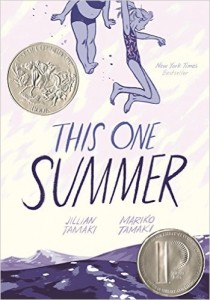 The Great Graphic Novel Experiment is in full swing in my classroom. In fact, it has become the focal point of my passions this year. I’ve been so vocal about it that my wife and kids actually bought me a couple graphic novels for my birthday. I’m “all in,” as Matt Damon says in the film Rounders.
The Great Graphic Novel Experiment is in full swing in my classroom. In fact, it has become the focal point of my passions this year. I’ve been so vocal about it that my wife and kids actually bought me a couple graphic novels for my birthday. I’m “all in,” as Matt Damon says in the film Rounders.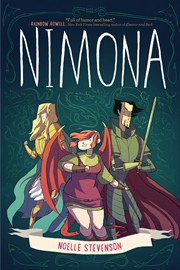 I could go on, but I think the broader point is more important: these are stories that will speak to any reader. I passed along two of the aforementioned titles to other people in my department, who sent back rave reviews—and then sent along new titles of their own! Nimona, a work of fantasy, and the graphic novelization of Mrs. Peregrine’s Home for Peculiar Children are now in my queue.
I could go on, but I think the broader point is more important: these are stories that will speak to any reader. I passed along two of the aforementioned titles to other people in my department, who sent back rave reviews—and then sent along new titles of their own! Nimona, a work of fantasy, and the graphic novelization of Mrs. Peregrine’s Home for Peculiar Children are now in my queue.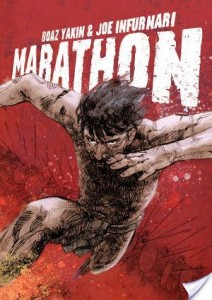 And what’s more, other research hints that such visual reading may also maximize a reader’s ability to retain information. That might not seem like a key merit for pleasure reading. But consider how many graphic novels have been written about historical events and culturally relevant topics: Marathon, about the Greek tale of that famous run; Templar, about what became of that famous secret society; and Americus, about censorship in literature. They’re all fiction, but still dense with contextual facts that the research suggests students will retain.
And what’s more, other research hints that such visual reading may also maximize a reader’s ability to retain information. That might not seem like a key merit for pleasure reading. But consider how many graphic novels have been written about historical events and culturally relevant topics: Marathon, about the Greek tale of that famous run; Templar, about what became of that famous secret society; and Americus, about censorship in literature. They’re all fiction, but still dense with contextual facts that the research suggests students will retain. Next month I hope to bring you an update from
Next month I hope to bring you an update from  no right answer, because he isn’t reducible to that single, misleading adjective in the book’s title. He’s a bootlegger and rather shallow in his desires, but he’s also a man of enormous will and work ethic and, of course, hope. And the second question excuses Romeo and Juliet entirely. What we perhaps should ask about them is whether they might both have survived if either of them had been mature enough to have patience. Their love was noble and beautiful, but my goodness, if I simply HAD to have everything in my life the way I wanted it to be for all eternity within a fortnight, I might wind up dead in a church basement too.
no right answer, because he isn’t reducible to that single, misleading adjective in the book’s title. He’s a bootlegger and rather shallow in his desires, but he’s also a man of enormous will and work ethic and, of course, hope. And the second question excuses Romeo and Juliet entirely. What we perhaps should ask about them is whether they might both have survived if either of them had been mature enough to have patience. Their love was noble and beautiful, but my goodness, if I simply HAD to have everything in my life the way I wanted it to be for all eternity within a fortnight, I might wind up dead in a church basement too. A real conversation, repeated yearly:
A real conversation, repeated yearly: It was inspiring and tragic to watch him try to tackle a book that matched his interests, but which was simply beating him down in terms of comprehension. I wasn’t about to tell him to quit; he’d come too far for me to do that to him.
It was inspiring and tragic to watch him try to tackle a book that matched his interests, but which was simply beating him down in terms of comprehension. I wasn’t about to tell him to quit; he’d come too far for me to do that to him.